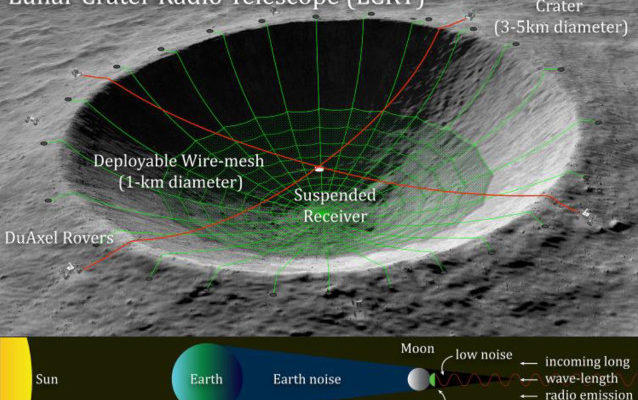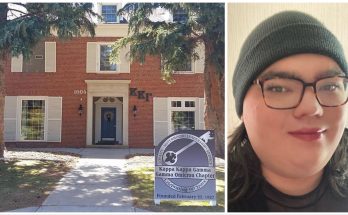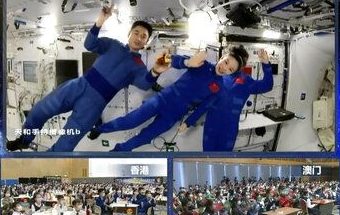By Edwards
NASA has given out some new grants for innovative space projects.
Perhaps the wildest of the chosen projects is a plan to put a radio telescope on the moon that could give us a glimpse of some of the earliest moments after the Big Bang.
The NASA supported project aims to put a 3,281-foot radio telescope within a crater on the far side of the moon.
A move that could end up with the moon looking a bit like the Death Star from Star Wars.
Radio telescope dishes need to be a curved parabolic shape to capture waves and reflect them to a receiver at the center.
This is why a crater would make a perfect natural dish and would require less equipment and construction in space.
According to the project team, this open radio telescope would be the largest in the solar system.
Placing tech like this on the lunar surface instead of Earth apparently has “tremendous advantages.”
The concept is being called the Lunar Crater Radio Telescope (LCRT).
The researchers think they could use it to observe the Universe in a lot more detail because Earth’s atmosphere and radio noise wouldn’t be getting in the way.
Scientists think the telescope could essentially help us look back in time to the earliest moments in the universe.
They think it could help them to learn how the universe inflated within a second after the Big Bang.
This is because the Big Bang is thought to have left behind faint ‘fingerprints’ on the cosmos that can’t currently be detected by radio telescopes on Earth.
Plans for building the telescope involve robots putting a 0.6-mile diameter wire-mesh across a crater.
In the center of the crater would be a suspended receiver that could pick up frequencies.
It could even be maintained by astronauts eventually as NASA plans to build an Artemis Base Camp on the moon.
NASA said: “This Lunar Crater Radio Telescope (LCRT), with 0.6-mile diameter, will be the largest filled-aperture radio telescope in the solar system.
“LCRT could enable tremendous scientific discoveries in the field of cosmology by observing the early universe in the 10– 50m wavelength band (i.e., 6–30MHz frequency band), which has not been explored by humans to-date.”
NASA has put $125,000 (£100,900) towards the project and the researchers now have nine months to see if they can develop it.




